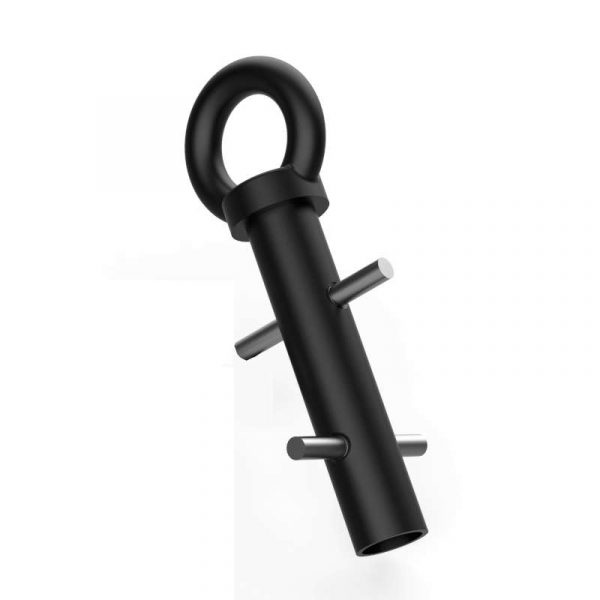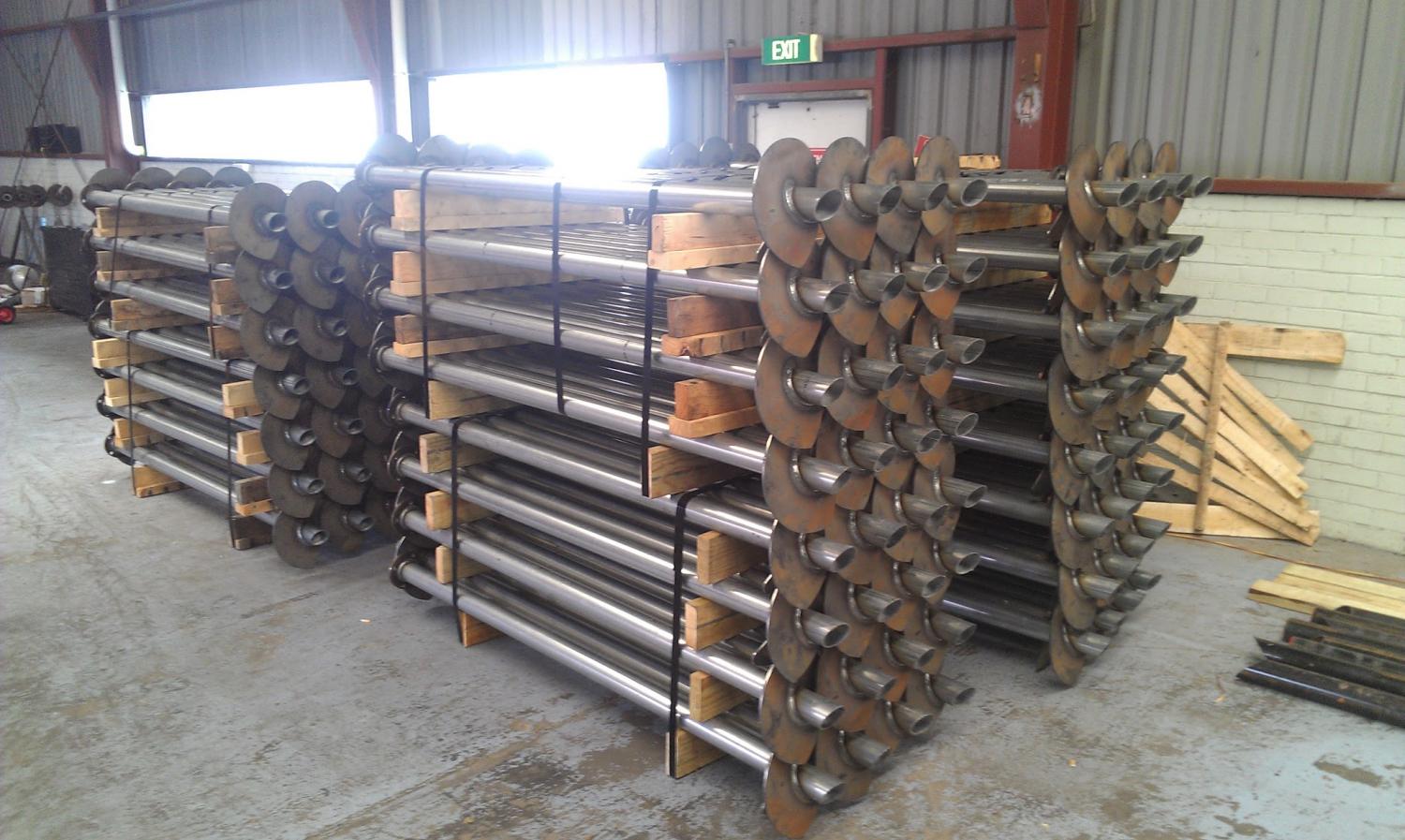Exactly How Heavy-Duty Earth Anchors Job: A Comprehensive Guide to Dirt Anchoring Solutions
Heavy-duty Earth supports play an essential function in offering stability and support in various construction applications. By embedding deeply into the ground, they resist upright and lateral forces properly. Different kinds of anchors provide to numerous dirt problems, making them flexible. Understanding their technicians and installment techniques is crucial for making the most of efficiency. What elements affect their efficiency, and exactly how do they contrast to traditional techniques? The solutions may stun you.
Understanding Durable Earth Anchors
Sturdy Earth anchors function as essential elements in different building and landscaping projects, providing security and support in challenging soil problems. These supports function by being installed into the ground, where they stand up to upright and side pressures. Their design enables for safe and secure attachment to frameworks, guaranteeing they continue to be anchored versus dirt movement or outside loads.The performance of sturdy Earth anchors largely depends on the kind of soil and the support's installment depth. Appropriate installment strategies are essential, as they determine the support's holding ability. Ecological aspects, such as wetness and freeze-thaw cycles, can also impact performance.These anchors are regularly used in applications varying from securing fences and retaining wall surfaces to stabilizing temporary structures during negative climate condition. Comprehending the concepts behind heavy-duty Earth anchors is vital for specialists looking for to enhance the toughness and safety and security of their jobs.
Kinds of Heavy-Duty Earth Anchors
Various sorts of durable Earth supports are created to satisfy details needs based on dirt problems and project demands. Helical supports, featuring screw-like blades, work in softer dirts, providing high lots capacities and easy installation. Driven supports, which are hammered right into the ground, appropriate for rocky surfaces and supply instant lots assistance. Tie-back supports are typically made use of in preserving wall applications, allowing for side assistance by anchoring right into the ground at an angle. Another type is the cast-in-place anchor, suitable for concrete applications, as they are integrated into foundations for boosted stability. Soil screw supports are versatile alternatives that can be made use of in various dirt types, giving trustworthy tension and compression abilities. Each type serves distinctive applications, guaranteeing stability and security in building and landscaping jobs. Understanding these choices enables notified choices in selecting the ideal Earth securing solution.
The Mechanics of Soil Anchoring

Comprehending the mechanics of soil anchoring calls for an examination of different kinds of Earth anchors and their installment techniques. Each anchor type presents special characteristics that affect its effectiveness in different dirt problems. Correct installation methods are vital for taking full advantage of the securing system's security and efficiency.
Sorts Of Earth Anchors
Earth supports, crucial parts in soil anchoring systems, been available in a number of kinds, each created for specific applications and soil conditions. The most usual kinds consist of screw supports, which are twisted into the ground, giving solid side resistance. Helical supports feature blades that permit reliable setup in different soil types, making them appropriate for both short-lived and irreversible applications. Driven anchors, usually made from steel, are inculcated the soil and work in dense or rough environments. Auger anchors use a helical layout to assist in setup in softer dirts. Plate anchors are composed of a flat plate hidden horizontally, dispersing tons over a bigger area, suitable for applications calling for high lots abilities in cohesive soils.
Setup Techniques Clarified
Correct installation techniques are essential for the performance of dirt anchoring systems. The procedure generally starts with site assessment, confirming the selected location can support the support's lots. After determining the proper support type, appropriate hole depth and angle must be established. The installment includes driving the support right into the ground utilizing specific devices, such as manual or hydraulic motorists, to achieve finest embedment. Post-installation, tensioning the anchor is important to assure stability; this is commonly confirmed with load screening. In addition, surrounding soil problems should be kept an eye on to avoid displacement. Adhering to these methods not just enhances the anchor's performance however also lengthens its life-span, giving reputable assistance for various applications.
Applications of Heavy-Duty Earth Anchors
While durable Earth anchors are frequently associated with building and construction and landscape design, their flexibility reaches a variety of applications across various markets. In civil engineering, they supply crucial support for maintaining wall surfaces, making certain security in locations prone to soil erosion. The marine market utilizes these anchors for securing docks and marinas, protecting against activity brought on by currents and trends. Furthermore, in the telecom industry, heavy-duty Earth anchors are substantial for supporting cell towers and other tall structures against wind forces. Agricultural applications likewise benefit, as these supports can safeguard frameworks like greenhouses and animals secure fencing, guaranteeing they stand up to extreme weather condition conditions. Furthermore, in renewable energy projects, such as wind farms, Earth anchors play an essential role in securing generator foundations, enhancing general safety and performance. This wide range of applications highlights the adaptability and this post reliability of sturdy Earth anchors throughout different areas.
Benefits Over Typical Anchoring Approaches
Although standard anchoring methods have actually long been depended upon for security, sturdy Earth supports provide substantial advantages that enhance performance and efficiency. One significant benefit is their premium load-bearing ability, which allows them to endure better forces without failing. This toughness makes them excellent for demanding applications, such as in construction and energy installations.Additionally, durable Earth anchors are created for much deeper setup, providing greater security in numerous dirt conditions, including sandy or loosened dirts. Their resistance to rust and environmental aspects guarantees a longer life-span and reduced maintenance expenses contrasted to standard methods.Moreover, these anchors can be installed with marginal disruption to the surrounding location, maintaining the honesty of the landscape. Generally, sturdy Earth supports offer a trustworthy and efficient solution for anchoring demands, going beyond the constraints commonly related to typical anchoring techniques.
Setup Process and Finest Practices
The installment procedure for soil anchoring solutions starts with comprehensive prep work and website analysis navigate to this website to assure peak efficiency. Following this, a step-by-step setup overview gives clear guidelines for reliable application (soil anchoring solutions). Sticking to these ideal techniques is necessary for accomplishing lasting and reliable anchoring outcomes
Prep Work and Site Assessment
Efficient preparation and extensive site evaluation are essential action in the installment of soil securing options. Before installment, the dirt kind need to be evaluated to establish its bearing ability and suitability for anchoring. Carrying out a geotechnical survey can offer important info concerning soil composition, moisture levels, and potential ground movement. Furthermore, identifying existing frameworks, greenery, and energies is essential to avoid interference during installment. The location must be cleared of particles and obstacles to guarantee secure gain access to for equipment. Weather must also be kept an eye on, as adverse problems can impact both safety and security and setup efficacy. By thoroughly preparing the website and examining all pertinent variables, the chance of successful anchor efficiency is considerably increased.
Step-by-Step Setup Overview
A comprehensive installment process is important for accomplishing ideal performance of soil securing solutions. The setup begins with choosing the appropriate support kind and guaranteeing the website is clear of particles. Next off, appropriate hole placement is determined based upon load demands. When the place is developed, openings are pierced to the defined depth and size using the correct tools. The support is then inserted into the hole, making certain it is aligned properly. After protecting the support, dirt is backfilled and compacted to improve security. It is essential to follow manufacturer guidelines throughout the procedure. A post-installation assessment confirms that the anchors are sufficiently positioned and operating as meant, providing reputable support for the designated application.

Maintenance and Assessment of Earth Anchors
Normal maintenance and evaluation of Earth supports are necessary for making sure long-term efficiency and stability. Routine checks enable the very early detection of issues such as rust, loosening up, or dirt motion. Assessors must look for indications of corrosion or deterioration on the support components, especially at the connection points. Furthermore, the bordering soil must be assessed for erosion or adjustments in moisture material, which can influence anchor effectiveness.It is suggested to develop a regular evaluation routine, preferably a minimum of annually, depending on environmental conditions. Throughout assessments, all visible parts need to be cleaned up to remove dirt or debris that can conceal possible troubles. Any signs of distress, such as tilting structures or uncommon settling, should trigger instant assessment. Appropriate paperwork of examinations can aid in tracking anchor performance over time and help with prompt maintenance activities, guaranteeing the supports continue to be reliable and functional.
Often Asked Inquiries
What Materials Are Heavy-Duty Earth Anchors Usually Made From?
Heavy-duty Earth supports are normally built from sturdy products such as galvanized steel index or stainless-steel, making certain stamina and resistance to corrosion. These products give resilient support and stability in numerous soil conditions and applications.
How Do Soil Problems Affect Support Efficiency?
Soil problems greatly influence anchor performance. Variables such as soil kind, wetness material, and compaction influence the anchor's grip and security, with cohesive soils commonly providing far better resistance than sandy or loosened soils, affecting general performance.
Can Heavy-Duty Earth Anchors Be Reused After Removal?
Heavy-duty Earth supports can be reused after removal, given they are inspected for damages and wear. Proper cleaning and upkeep enhance their durability, guaranteeing efficient efficiency in subsequent setups when problems permit secure reinstallation.
What Are the Ecological Impacts of Utilizing Earth Anchors?
The environmental influences of using Earth anchors include potential dirt disturbance, disturbance of local ecological communities, and possible contamination of groundwater. However, if used responsibly, their benefits commonly surpass these concerns, promoting security in different applications.
How Do I Choose the Right Anchor for My Task?
